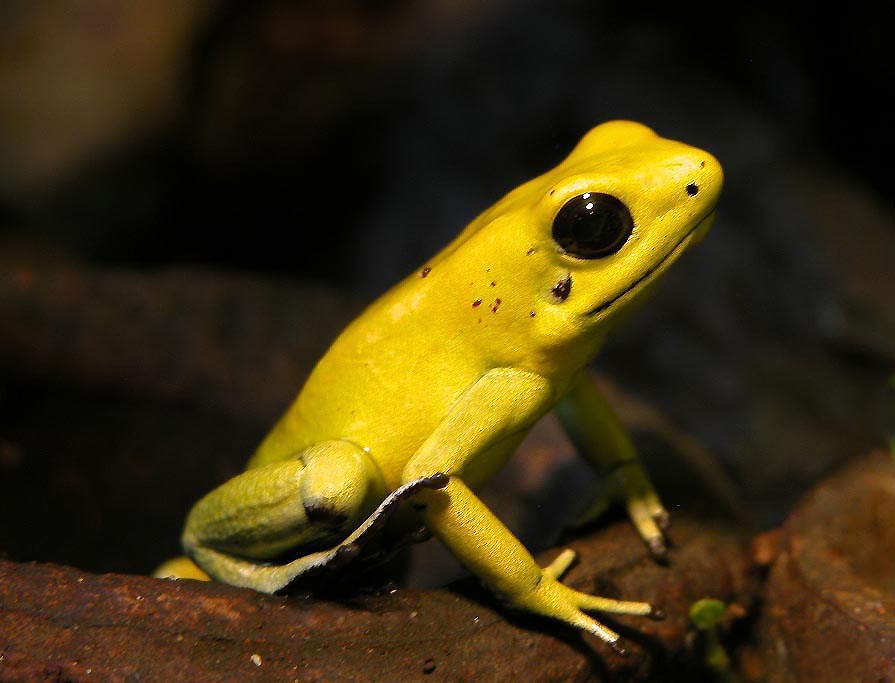I got that poison (uh huh), I got that poison (uh huh) I got that poison, that poison on my mind - Nicole Scherzinger -Kiss me, ki-ki-kiss me Infect me with your love and Fill me with your poison - Katy Perry -
Unlike Nicole who stores poison in her mind, nature herself uses a lot of poison for either predation or self defence. Anyway, here are some information about poison
The picture is of the golden poison frog. Considered as the most poisonous animal on earth. Although they can kill people by simply letting people touch them, the cute, poor frogs are endangered at the present. Sad, isn't it? =(
- Cyanotoxin - Produced by cyanobacterias
- Hemotoxins target and destroy red blood cells, and are transmitted through the bloodstream.
- Necrotoxins (this one is truly terrifying) cause necrosis (i.e., death) in the cells they encounter and destroy all types of tissue. Necrotoxins spread through the bloodstream. In humans, skin and muscle tissues are most sensitive to necrotoxins. Organisms that possess necrotoxins include:
- The brown recluse/fiddle-back/violin spider(A perfect bug name for this blog)
- The "Puff Adder" - Bitis arietans
- Necrotizing fasciitis (the "flesh eating" bacteria)
- Neurotoxins primarily affect the nervous systems of animals. Organisms that possess neurotoxins include:
- The Black Widow and other widow spiders
- Most scorpions
- The box jellyfish
- Elapid snakes
- The Cone Snail
- Cytotoxins are toxic at the level of individual cells, either in a non-specific fashion or only in certain types of living cells:
- Ricin is a plant toxin found in the castor bean plant
- Apitoxin, the honey bee venom. (It causes inflammation and prevents the blood from clotting.1% of the population is allergic to it. Good news is, it can be deactivated with ethanol)
- Mycotoxins are toxins produced by fungi. They are a common source of toxins in grains and other foods

No comments:
Post a Comment